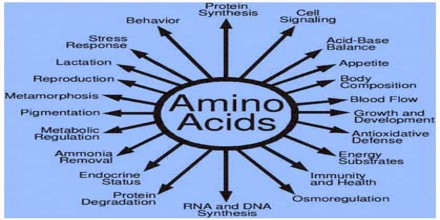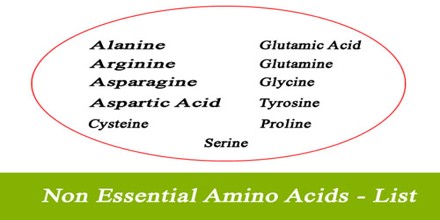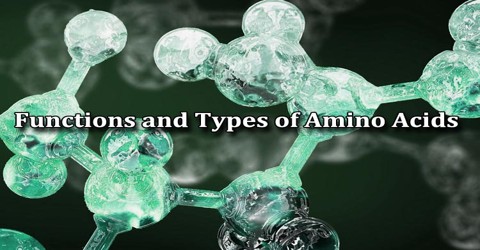Functions and Types of Amino Acids
A large proportion of our cells, muscles and tissue is made up of amino acids, meaning they carry out many important bodily functions, such as giving cells their structure. They also play a key role in the transport and the storage of nutrients. Amino acids have an influence on the function of organs, glands, tendons and arteries. They are furthermore essential for healing wounds and repairing tissue, especially in the muscles, bones, skin and hair as well as for the removal of all kinds of waste deposits produced in connection with the metabolism.

Functions of Amino Acids
There are 20 different amino acids that combine to create the impressive array of chemical versatility of proteins. Amino acids can be essential, nonessential or conditional. They are considered essential when required to be taken in by diet, whereas nonessential when they can be made by the body. Conditional amino acids are mostly required only during certain circumstances, such as stress and illness.
- Amino acids are a source of energy; like proteins, they can provide about 4 Calories per gram.
- In the human body, certain amino acids can be converted to other amino acids, proteins, glucose, fatty acids or ketones.
- Chemical messengers (neurotransmitters) in the nervous system: aspartate, GABA, glutamate, glycine, serine
- Tyrosine is a precursor of dopamine, epinephrine, norepinephrine and thyroxine.
- Tryptophan is a precursor of melatonin and serotonin and nicotinic acid (vitamin B3)
- Histidine is a precursor of histamine.
- Glycine is a precursor of heme, a part of hemoglobin.
- Aspartate, glutamate and glycine are precursors of nucleic acids, which are parts of DNA.

Types of Amino Acids
Amino acids are classified into two general types: essential and non-essential amino acids. Essential amino acids are those that cannot be synthesized by the body on its own and thus need to be acquired through your diet. Non-essential amino acids are those that your body can produce, specifically by the liver, without any outside help.
The 20 proteinogen amino acids are also called standard amino acids, which can be divided into three groups: essential, semi-essential and non-essential.
Eight amino acids are essential for humans, as the body cannot produce them by themselves, and they have to be supplied externally. These are: isoleucine, leucine, lysine, methionine, phenylalanine, threonine, tryptophan and valine.
Essential Amino Acids
First up are the essential amino acids. These are the nine amino acids that our body cannot create on its own, and that we must obtain by eating various foods. Adults need to eat foods that contain the following eight amino acids. Histidine, the ninth amino acid, is only necessary for babies.

Instead of storing up a supply of the essential acids, the body uses them to create new proteins on a regular basis. Therefore, the body needs a continual – ideally daily – supply of these amino acids to stay healthy.
Here is a list of Essential Amino Acids found in our body:
- Isoleucine
- Histidine
- Leucine
- Methionine
- Lysine
- Phenylalanine
- Tryptophan
- Threonine
- Valine
Non-Essential Amino Acids
The other type is the non-essential amino acids, 11 of which exist and are synthesized by the body. Thus, although they are an important part of building proteins, they do not need to be included in an everyday diet. Eight of these non-essential acids are also known as “conditional,” meaning that the body may not be capable of producing enough of them when presented with substantial stress or illness.

Here is a list of Non-Essential Amino Acids found in our body:
- Alanine (from pyruvic acid)
- Arginine (from glutamic acid)
- Asparagine (from aspartic acid)
- Aspartic Acid (from oxaloacetic acid)
- Cysteine
- Glutamic Acid (from oxoglutaric acid)
- Glutamine (from glutamic acid)
- Glycine (from serine and threonine)
- Proline (from glutamic acid)
- Serine (from glucose)
- Tyrosine (from phenylalanine)
















